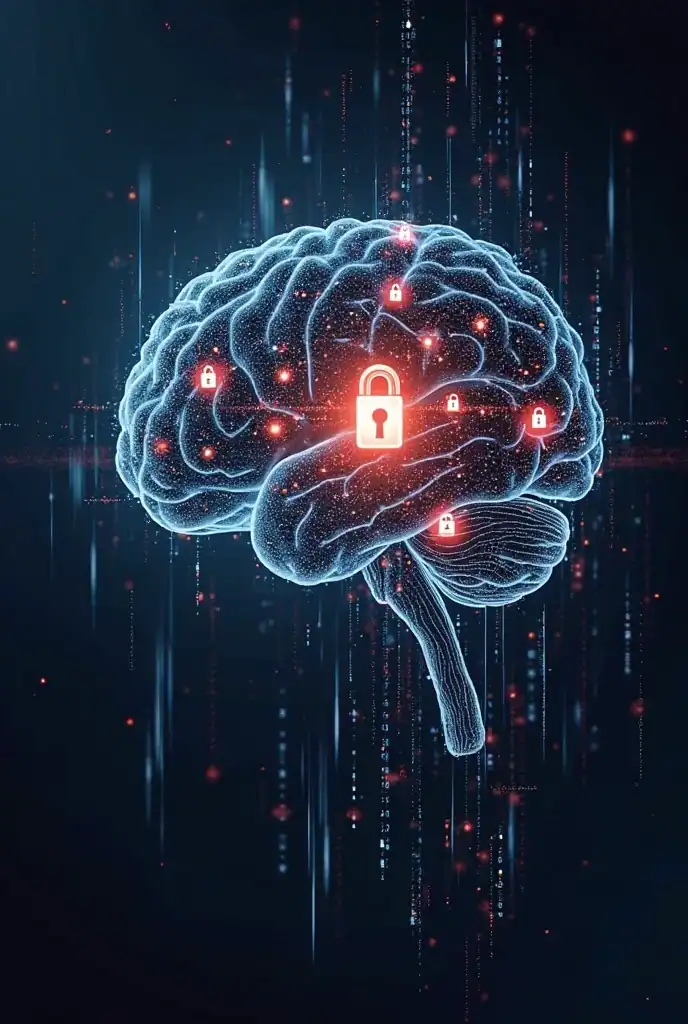Cybersecurity Risks in AI-Driven Financial Systems
In today’s rapidly evolving financial landscape, Artificial Intelligence (AI) is revolutionizing how you manage money, detect fraud, and make decisions. But as AI takes a front seat in banking and fintech, it also opens new doors for cyber threats that can directly affect your finances and data security.
Dives deep into the cybersecurity challenges that come with AI-driven financial systems, explaining what risks you face, why they matter, and how you can protect yourself and your organization. Understanding these complexities will empower you to navigate this high-tech world with confidence and vigilance.
- Introduction to AI in Financial Systems and Its Cybersecurity Implications
- Key Cybersecurity Challenges Faced by AI-Driven Financial Systems
- Cyber Threats Unique to AI-Powered Financial Systems
- Strategies and Technologies to Enhance Cybersecurity in AI Finance
- The Future of Cybersecurity in AI-Driven Financial System
- Protecting Your Future in AI-Driven Finance
- FAQs : " Cybersecurity Risks "
- More about :
Introduction to AI in Financial Systems and Its Cybersecurity Implications
Overview of AI Applications in Finance
You might be surprised at how deeply AI is embedded in the financial sector. From automating routine transactions and customer service chatbots to advanced fraud detection and credit scoring, AI transforms countless processes.
By analyzing massive data sets in real time, AI enables faster decisions and more personalized financial services. But as it automates and optimizes, it also becomes a target for cybercriminals seeking to exploit these systems for their gain.
How AI Enhances Financial Security and Operations
AI’s ability to spot unusual patterns in transactions helps detect fraud more effectively than traditional methods. It can analyze millions of transactions instantly to flag suspicious activity, saving your bank and your accounts from potential breaches.
AI also improves risk management by predicting market trends and assessing credit risks with greater accuracy, which can directly benefit your investment and lending options.
Emerging Cybersecurity Risks in AI-Driven Financial Environments
Despite these advantages, integrating AI introduces new cybersecurity challenges. AI models rely heavily on data quality and system integrity. If a hacker manipulates the input data or compromises the AI algorithm, the entire system’s reliability could collapse.
Additionally, AI-powered systems themselves can be vulnerable to attacks designed specifically to exploit machine learning processes, putting your sensitive financial information at risk.
The Growing Importance of Cybersecurity in AI Finance
As AI adoption in finance grows, so does the sophistication of cyber threats. Protecting AI-driven systems isn’t just an IT issue—it’s critical for your financial safety and trust in digital banking.
You need to stay informed about these risks and the safeguards being developed to counter them to protect your assets and personal data effectively.
Key Cybersecurity Challenges Faced by AI-Driven Financial Systems

AI-Specific Vulnerabilities and Attack Vectors
AI systems present unique vulnerabilities. One common risk is adversarial attacks, where attackers subtly alter input data to fool the AI into making wrong decisions, such as approving fraudulent transactions.
You also face risks from model theft, where hackers replicate your AI models to exploit weaknesses or reverse-engineer sensitive algorithms.
Risks of Data Breaches and Financial Data Theft
AI systems depend on vast amounts of sensitive data, including personal identification and transaction histories. If your AI infrastructure is breached, this data can be stolen or manipulated, leading to identity theft, financial loss, or market manipulation.
Financial data breaches can severely impact your trust in financial institutions, making robust cybersecurity measures non-negotiable.
Threats from Adversarial Attacks on AI Models
Adversarial attacks can be particularly dangerous because they’re difficult to detect. For example, subtle tweaks to transaction data can trick AI systems into categorizing fraudulent activity as legitimate, bypassing security checks that you rely on.
Understanding this threat helps you appreciate the need for advanced monitoring systems to catch such sophisticated exploits.
Insider Threats and AI System Manipulation
Cyber risks aren’t limited to external hackers. Insider threats—disgruntled employees or contractors with access to AI systems—can manipulate algorithms or leak sensitive data.
Strong access controls, regular audits, and employee training are vital to minimize these risks and protect your financial data.
Cyber Threats Unique to AI-Powered Financial Systems

AI-Powered Phishing and Social Engineering Attacks
Phishing attacks have evolved, leveraging AI to create highly personalized and convincing scams that can deceive even the most cautious individuals.
You might receive emails or messages that appear authentic but aim to steal your credentials or deploy malware into your systems.
Ransomware and DDoS Attacks Targeting AI Infrastructure
Ransomware can lock you out of critical AI-powered financial systems until a ransom is paid, disrupting services and potentially causing financial losses.
Similarly, Distributed Denial of Service (DDoS) attacks overwhelm AI infrastructure with traffic, causing slowdowns or outages that can undermine your confidence in digital financial platforms.
Exploiting Machine Learning Algorithms for Fraud
Hackers are increasingly finding ways to exploit weaknesses in machine learning algorithms themselves—introducing biased data to distort credit scoring or manipulate automated trading.
Such fraud not only affects financial institutions but can directly impact your loans, investments, and financial reputation.
Challenges in Detecting Sophisticated AI-Driven Cyber Attacks
Ironically, AI can be used by attackers to design smarter, stealthier attacks that evade traditional security tools.
This cat-and-mouse game means you and your financial providers must continuously upgrade defenses to detect and respond to emerging AI-driven cyber threats.
Strategies and Technologies to Enhance Cybersecurity in AI Finance

Implementing Robust AI Model Security Measures
To secure AI models, developers use techniques like adversarial training, where AI is exposed to attack scenarios during development to recognize and resist manipulations.
Regular model audits and updates ensure vulnerabilities are patched before they can be exploited.
Utilizing Threat Intelligence and Automated Detection Systems
Automated threat detection systems powered by AI itself monitor network traffic and transactions to identify unusual behaviors instantly.
By leveraging threat intelligence feeds and real-time analytics, these systems help you respond swiftly to potential breaches.
Role of Blockchain and Encryption in Securing AI Data
Blockchain’s decentralized ledger offers transparency and immutability, protecting transaction histories from tampering.
Strong encryption methods safeguard data in transit and at rest, ensuring your financial information remains confidential and secure.
Compliance with Cybersecurity Regulations and Standards
Regulatory frameworks like NIST, ISO 27001, GDPR, and financial authorities such as SEC and FINRA set stringent cybersecurity standards.
Adhering to these regulations is critical for financial institutions to protect your data and maintain trust.
The Future of Cybersecurity in AI-Driven Financial System

Advancements in AI for Cyber Defense
AI will continue to improve cybersecurity by detecting zero-day exploits, predicting threats, and automating responses faster than human teams can.
For you, this means more resilient and adaptive financial security systems protecting your assets.
Collaborative Efforts Between Financial Institutions and Regulators
Cooperation between banks, fintech firms, and regulatory bodies fosters shared intelligence and unified responses to cyber threats.
This collaboration strengthens the overall ecosystem, providing you with safer digital financial services.
Preparing for Emerging Threats in AI Finance
New threats like quantum computing attacks and more sophisticated social engineering techniques loom on the horizon.
Staying informed and advocating for robust cybersecurity measures helps ensure your finances remain protected.
Best Practices for Ongoing AI Cybersecurity Management
For continuous protection, you should:
- Keep software and systems updated
- Use multi-factor authentication for sensitive accounts
- Educate yourself and employees about phishing and social scams
- Monitor accounts regularly for suspicious activities
These practices empower you to play an active role in securing your financial environment.
Protecting Your Future in AI-Driven Finance
AI is transforming financial systems, offering unprecedented efficiency and innovation. Yet, with these advancements come complex cybersecurity challenges that you cannot afford to ignore.
By understanding these risks and adopting robust security practices, you can confidently navigate the AI-driven financial world, safeguarding your assets and personal data against emerging cyber threats.
Are you ready to secure your financial future in the age of AI? Stay proactive by educating yourself about cybersecurity risks, choosing trusted financial providers who prioritize security, and implementing strong protections on your accounts. The future of finance is digital—and your safety depends on how prepared you are today.
FAQs : ” Cybersecurity Risks “
What are the main cybersecurity risks in AI-driven financial systems?
AI-driven systems face risks such as data breaches, algorithmic manipulation, and adversarial AI attacks that can disrupt financial operations.
How can financial institutions secure AI algorithms?
By applying encryption, regular audits, AI model validation, and implementing robust access controls to protect against tampering and misuse.
Why is AI both a threat and a solution in financial cybersecurity?
AI can detect threats in real time but can also be exploited by cybercriminals through model poisoning, data injection, and deepfakes.
What role does regulatory compliance play in AI cybersecurity?
Adhering to GDPR, PSD2, and AI-specific guidelines ensures financial institutions maintain ethical, legal, and secure AI practices.
How can companies prepare for emerging AI cybersecurity threats?
By investing in threat intelligence, continuous AI training, human-AI oversight, and proactive incident response systems.
More about :
The Future of AI in Cybersecurity: Securing the Digital Frontier


